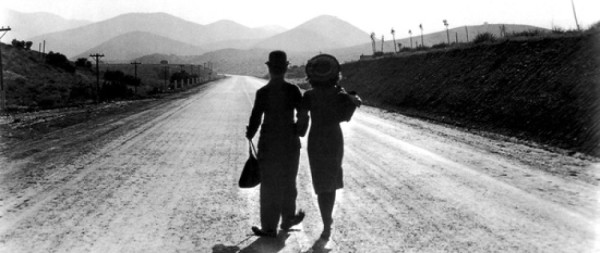Citizen Kane
Directed by Orson Welles
Written by Orson Welles and Herman J. Mankiewicz
1941/USA
RKO Radio Pictures
Repeat viewing/Warner Home Video Special Edition DVD
#150 of 1001 Movies You Must See Before You Die
[box] Leland: That’s all he ever wanted out of life… was love. That’s the tragedy of Charles Foster Kane. You see, he just didn’t have any to give.[/box]
What do you say about “The Greatest Movie Ever Made”?
If you are reading this you already know the plot. Charles Foster Kane is sent away from his parents at a tender age to be raised in the lap of luxury and spends the rest of his life trying to find love. His overbearing personality and neediness make this virtually impossible. Although he becomes an opinion leader and Great Man, he is ultimately unsuccessful at attaining his goal through his media empire, political career, or two marriages.
The story is told through the device of sending an inquiring reporter out to interview people who knew Kane to find out the meaning of his last word “Rosebud”. After a mock newsreel obituary summarizing Kane’s life, we see episodes as non-consecutive flashbacks through the eyes of various people being interviewed. The film represented the screen debuts of many actors in Welles’s Mercury Theater company: Welles himself; Joseph Cotten; Agnes Moorhead; Everett Sloane; and Ruth Warrick, among others. Also with Dorothy Comingore as Welle’s second wife, George Coulouris as his banker guardian; and Ray Collins as his political rival.
Before I revisited the film, I listened again to Roger Ebert’s fantastic commentary track and more personal one by Peter Bogdanovich, who was a friend of Welles’ before his death. The Ebert commentary points out all the special effects tricks and innovations in cinematography involved in making the film. For example, deep focus photography did not capture the above shot. Two separate images were made and combined using an optical printer.
Citizen Kane had a comparatively low budget. Many of the lavish scenes at Xanadu were basically put together using smoke and mirrors. Rooms were decorated with a few pieces of furniture and lavish use of matte painting. The above shot shows how a hallway was made with matte paintings and live actors.
Citizen Kane remains an ever-fresh and exuberant look at what happens when a boy genius is given free-reign over all the contents of a huge magic kit. It is not my best-loved movie by far but I don’t have any problem with its status as “The Greatest Movie Ever Made”.
Welles and Mankiewicz won an Academy Award for their screenplay. Citizen Kane was nominated in the following categories: Best Picture; Best Director; Best Actor (Welles); Best Black-and-White Cinematography; Best Black-and-White Art Direction-Interior Decoration; Best Sound Recording; Best Film Editing; and Best Music, Scoring of a Dramatic Picture (Bernard Herrmann). I think Gregg Toland was robbed.
Original Trailer


Gregg Toland was robbed. I don’t know how many times I’ve seen CITIZEN KANE and have enjoyed teaching it over the years. Long ago I learned, if I tried to walk out during screening, I was quickly sucked in by its vortexal energy. Orson’s charm oozes out of every scene. As far as film language goes, it changed everything. There was no going back . . . .
I know what you mean about the vortex. It is amazing in every way and always seems so new.
Gregg Toland was definitely robbed. Even if you do not care about the story you would have to admit that the cinematography was breaking entirely new ground. Also the storytelling device was something new. Infact the only technical award it should not won would be Cinematography – Color.
I like the story. It is interesting and with a very good point.
Agree with you on the awards! What is amazing is that it was groundbreaking when it was made and it is still unique after all these years.